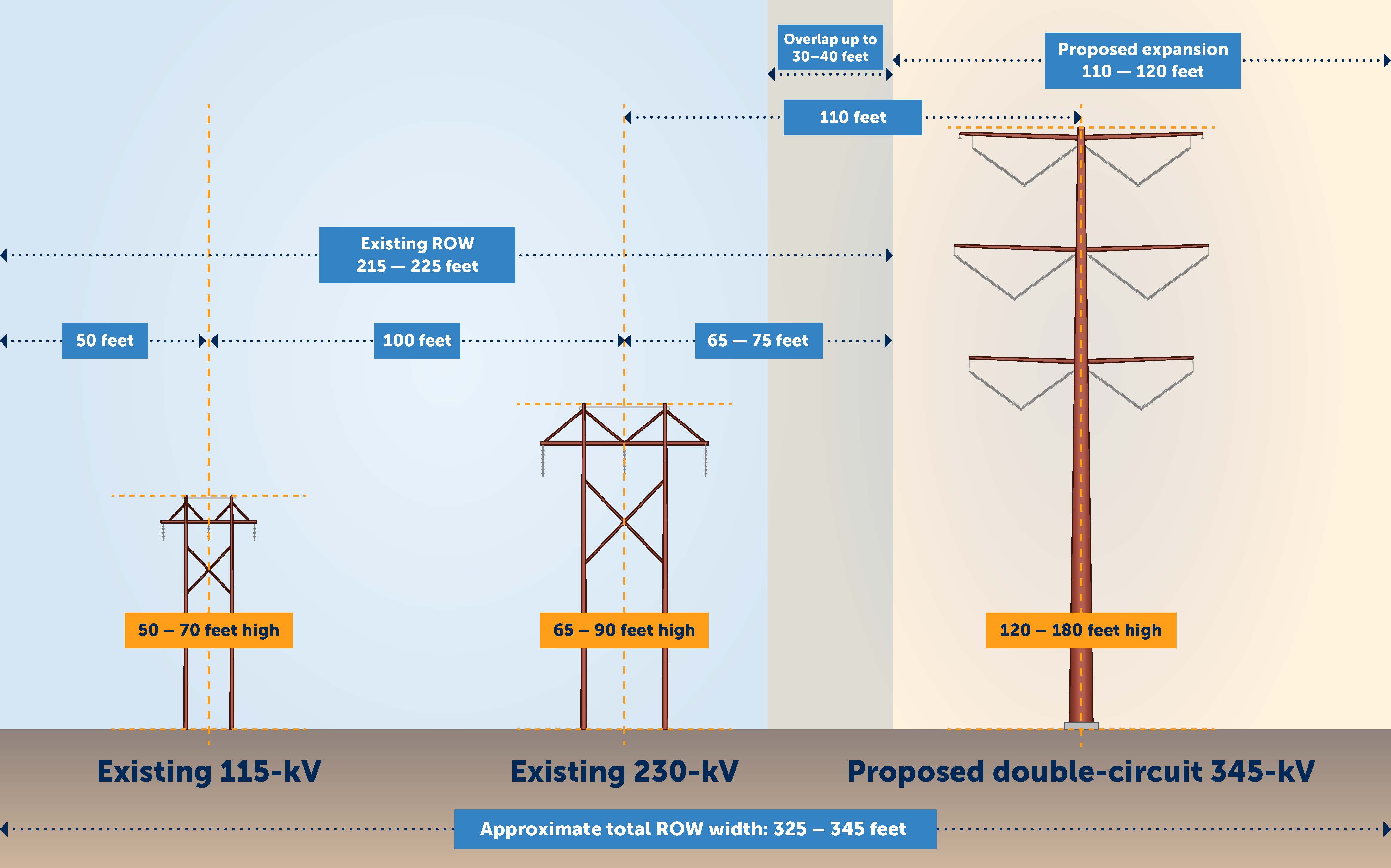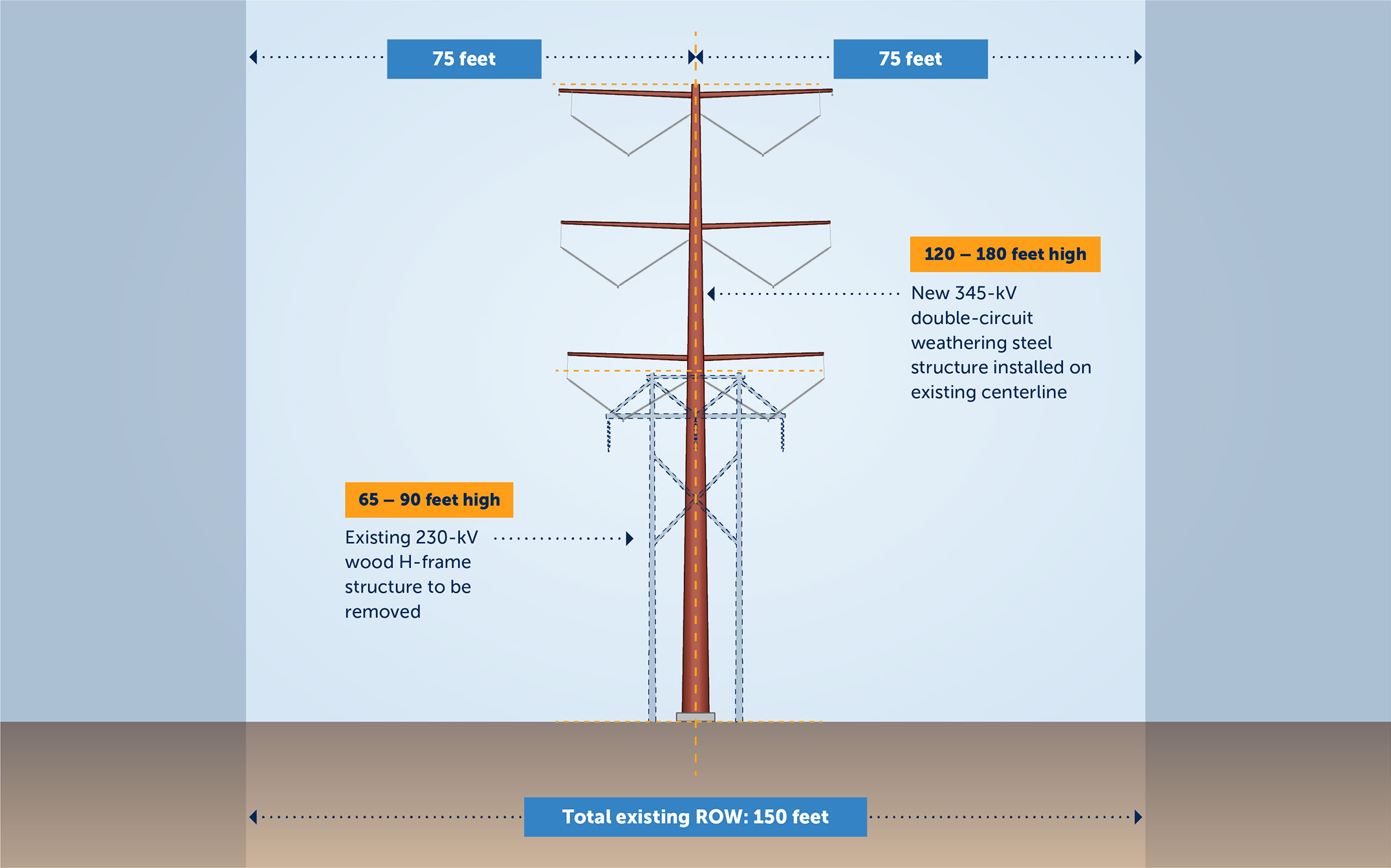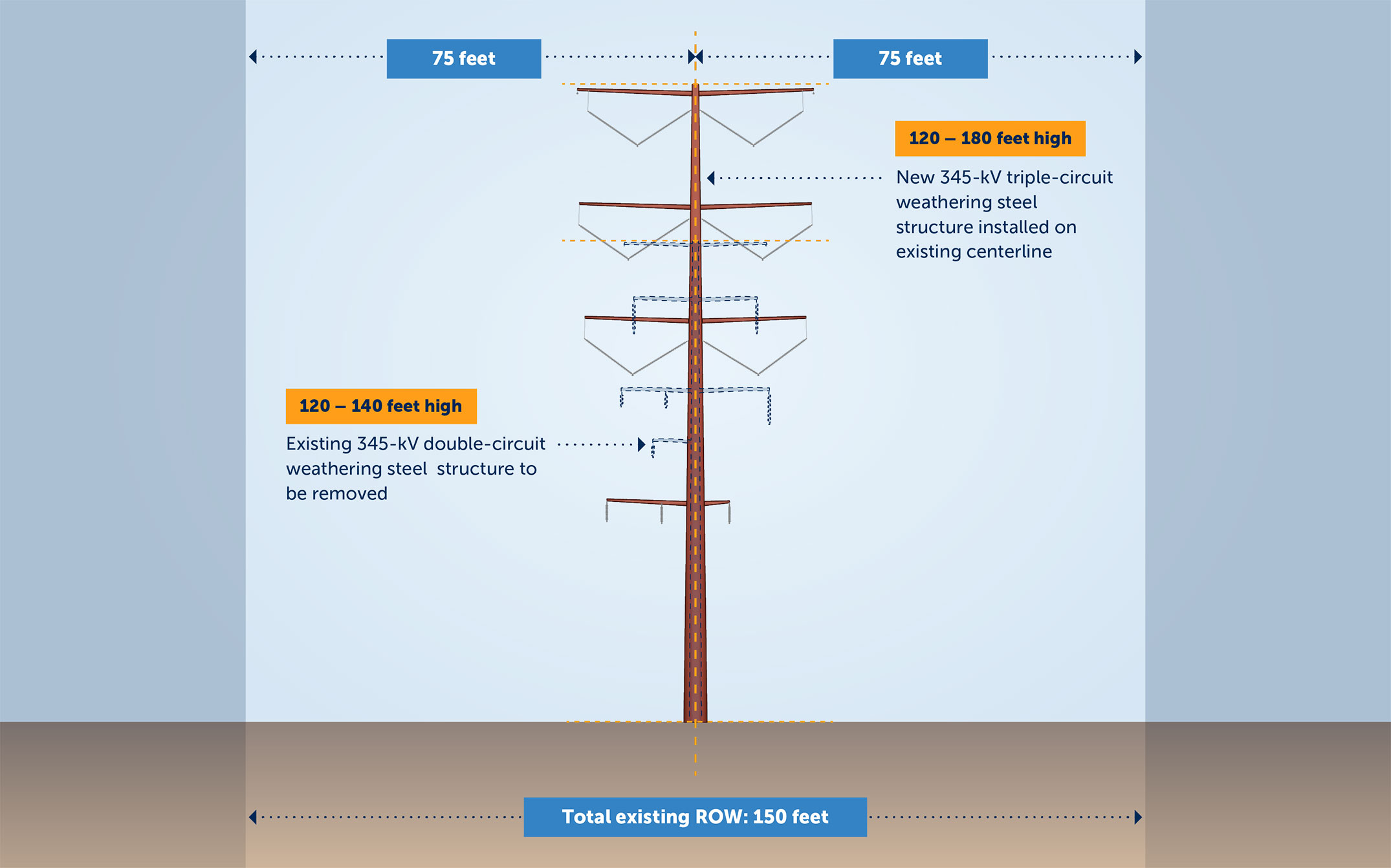Landowners
The project is intended to help maintain a reliable and resilient local and regional power grid as more renewable energy is brought online; existing power plants are retired; more homes and businesses shift to electricity to power appliances, equipment and heating and cooling systems; and more frequent extreme weather events occur. Construction is projected to begin in fall 2025.
If you are a landowner within the approved route, you will receive additional information from our project team in the coming weeks.
Land agent information
Landowners and residents with land involved in the right-of-way process have been and will continue to be contacted by our real estate team. Please reach out to the following land agents with any questions:
Matt Hagelin
763-445-5981
mhagelin@grenergy.com
MayRinda Cain
218-556-5926
mcain@landservicecompany.com
What landowners can expect
Northland Reliability Project representatives will contact impacted landowners and hold individual meetings to discuss the ROW process, including the need for temporary right-of-entry access, negotiation and acquisition of temporary and permanent land rights, and the restoration and damage process.
- Landowners are contacted to begin right-of-way acquisition process.
- An easement is presented to a landowner. An offer based on fair market value is presented.
- We work closely with the landowner to resolve concerns and reach an agreement. An easement is recorded.
- The utilities construct, operate and maintain the transmission line within the right-of-way.
Right-of-way needs near existing lines
There may be opportunities to overlap ROW with an existing line. We estimate up to 30-40 feet of ROW may be shared between the existing structure and the new structure depending on factors like engineering, construction and topography.
The typical ROW width will be at a minimum 150 feet for each transmission line (75 feet on each side of a transmission line). It is sometimes necessary to secure additional permanent ROW at angles or areas where we use specialty structures. It could also be necessary to secure temporary areas next to the permanent ROW for stringing and construction access.
Click images to enlarge.
Landowner resources
Frequently asked questions
Right-of-entry agreements grant temporary access prior to an easement and in support of field work necessary for the permitting, surveying and design phases of the project.
Beginning fall 2023 and continuing through 2026, personnel will be surveying within the proposed and alternative alignments in Segment 1 and existing transmission line ROW along Segment 2. Below are descriptions of the various surveys to be done within that timeframe:
Biological
These surveys will identify the presence and location of sensitive species within the proposed route. Surveys will mostly occur within the right-of-way but may expand beyond the right-of-way to identify the extent of the resource for design considerations. The survey typically involves field staff walking through areas of potentially suitable habitat to visually locate occurrences of listed species or temporarily placing small acoustic recording equipment on trees. Occurrences of target species will be mapped using a GPS unit.
Cultural resources (archaeological)
These surveys will assess the likelihood that a cultural resource or historic property may be present. Depending on the landscape, this may include a walk-over survey, subsurface shovel testing, or both. Recovered artifacts are property of the landowner, and landowners will be contacted if cultural materials are identified on their property.
Wetlands
These surveys will identify the presence and location of wetlands by walking the wetland boundary with a GPS unit, documenting plants, collecting photographs, and in some areas observing soils using a hand auger; all holes will be backfilled upon completion.
Weeds
These surveys will identify locations of noxious weeds using a GPS unit.
Land
These surveys will identify section corners, road and utilities crossings, and stake and/or flag locations for soil borings and structures for engineering review.
Soil borings
These surveys will identify hydrogeologic and geotechnical soil data used to design and construct the foundations for the transmission line structures. The survey consists of drilling borings to collect soil and bedrock samples. A temporary work area will be required at each boring location. Once completed, the crews will backfill the hole to existing grade.
When people talk about building new transmission lines, they often refer to an "easement" or a "right-of-way (ROW)." Although the terms are used interchangeably, they are distinct concepts. An easement is a land right document, and a ROW is the physical land upon which the facilities are located.
A ROW is typically a strip of land used for a specific purpose such as the construction, operation and maintenance of a road or transmission line. ROW is typically secured as an easement on a property.
An easement is a document allowing Minnesota Power and Great River Energy the right to construct, operate and maintain a transmission line and other associated infrastructure on a landowner's property. Terms of the easement are written in the easement agreement. Most electric utility easements are perpetual and not subject to termination or expiration. Once an easement is signed, it becomes part of the property record. The utility, the landowner who signed the easement, and all future property owners are bound by the agreement terms.
Market values are determined by sales studies conducted throughout the project area. These market values will be used to identify a per-acre value for the easement offer. Landowners will be offered a one-time payment based on fair market value for easement rights to their land.
The easement restricts the placement of buildings and structures within the easement area for safety and reliability and provides rights for access as well as clearing and removal of vegetation. Our project team will coordinate with landowners prior to construction. Additionally, easements stay with a property even if the ownership of a property changes.
In general, the land can continue to be used as before, provided that the use does not interfere with the construction, operation, and maintenance of the transmission line. This includes hunting and fishing, but note that no structures are allowed within the ROW, including deer stands.
You can farm up to the base of the transmission line structure and underneath the line. The public should exercise appropriate caution when operating equipment around any power line. The use of larger vehicles in proximity to any line requires additional review and such equipment should only be operated by qualified operators in accordance with OSHA safe work rules.
Minnesota Power and Great River Energy encourage landowners on the final approved route to discuss the activities they plan to conduct in the easement area with a land agent.
To the extent practicable, the project team will design the route to maximize separation from homes and businesses. Proximity to homes and businesses is one of the routing criteria for Minnesota Power and Great River Energy.
Minnesota Power and Great River Energy will require easements that allow for surveying, construction, operation and maintenance of a transmission line across a defined ROW located on the landowner's property. These easements will include the right to clear, trim and remove vegetation and trees from within the ROW, as well as trees adjacent to the ROW that may threaten the line if they fall.
We will do our best to minimize impacts during construction, which is expected to begin in 2027. Construction on Segment 2 may begin in 2025. However, the following temporary impacts will occur:
- Noise, dust and lights for nearby residents
- Equipment (such as pick-up trucks, tree-clearing machines, anchor-drilling trucks and wire-stringing vehicles), materials and construction crews located along the road and in project ROW
- Work during daylight hours with potential for some work to be completed outside normal working hours, which are 7 a.m. - 7 p.m.
- Temporary lane and road closures
- Removal of all trees and other tall vegetation within the easement area
- Erosion control measures will be taken to reduce impacts to streams and wetland areas
Following construction, Minnesota Power and Great River Energy will conduct ongoing maintenance of the transmission line, including but not limited to line inspections, surveys and vegetation management.
Landowners are eligible for reasonable compensation for property damage that may occur when the transmission line is constructed and during future repair and maintenance. Those issues are included in easement documents.





